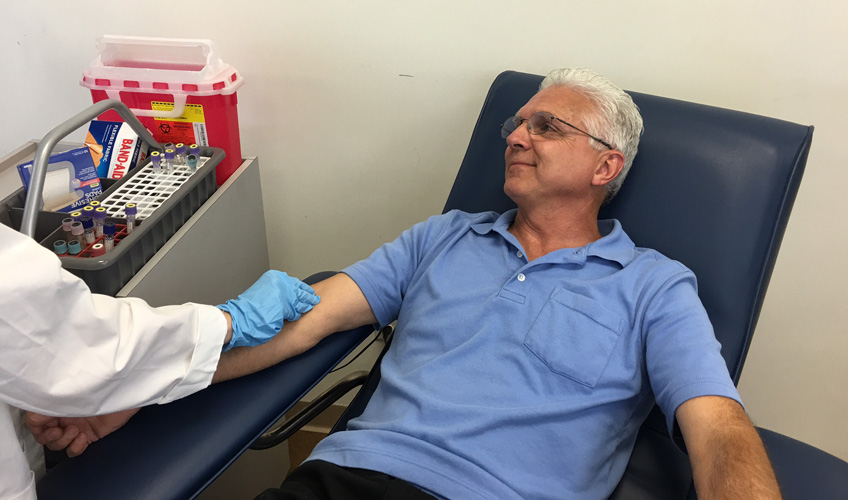The smart Trick of Northeast Medical Institute - New Haven Campus Phlebotomy Course & Cna Class That Nobody is Discussing
Wiki Article
The 45-Second Trick For Northeast Medical Institute - New Haven Campus Phlebotomy Course & Cna Class
Table of ContentsWhat Does Northeast Medical Institute - New Haven Campus Phlebotomy Course & Cna Class Mean?The Best Strategy To Use For Northeast Medical Institute - New Haven Campus Phlebotomy Course & Cna ClassThe 25-Second Trick For Northeast Medical Institute - New Haven Campus Phlebotomy Course & Cna Class10 Simple Techniques For Northeast Medical Institute - New Haven Campus Phlebotomy Course & Cna Class10 Easy Facts About Northeast Medical Institute - New Haven Campus Phlebotomy Course & Cna Class ExplainedFascination About Northeast Medical Institute - New Haven Campus Phlebotomy Course & Cna Class
The usage of such gadgets need to be accompanied by other infection avoidance and control practices, and training in their usage. Not all safety gadgets apply to phlebotomy. Before picking a safety-engineered device, customers need to completely check out offered gadgets to establish their suitable use, compatibility with existing phlebotomy techniques, and effectiveness in safeguarding personnel and patients (12, 33).For setups with low sources, cost is a driving consider procurement of safety-engineered tools - PCT Courses. Where safety-engineered devices are not readily available, competent usage of a needle and syringe serves. Unexpected exposure and particular details concerning an incident ought to be recorded in a register. Support services need to be promoted for those that go through accidental exposure.
labelling); transportation conditions; analysis of outcomes for medical administration. In an outpatient division or center, provide a dedicated phlebotomy work area containing: a tidy surface with two chairs (one for the phlebotomist and the various other for the individual); a hand laundry basin with soap, running water and paper towels; alcohol hand rub. In the blood-sampling space for an outpatient division or center, supply a comfy reclining sofa with an arm remainder.
The Northeast Medical Institute - New Haven Campus Phlebotomy Course & Cna Class Ideas
Ensure that the indications for blood tasting are clearly specified, either in a created method or in documented directions (e.g. in a research laboratory type). Accumulate all the devices needed for the treatment and place it within safe and very easy reach on a tray or cart, guaranteeing that all the products are plainly visible.Introduce on your own to the individual, and ask the person to mention their full name. Check that the research laboratory form matches the patient's identification (i.e. match the individual's details with the lab kind, to guarantee precise recognition).
Make the individual comfortable in a supine setting (ideally). Area a clean paper or towel under the person's arm. Go over the examination to be performed (see Annex F) and obtain spoken consent. The person has a right to refuse an examination any time before the blood sampling, so it is crucial to ensure that the client has recognized the treatment.
The 15-Second Trick For Northeast Medical Institute - New Haven Campus Phlebotomy Course & Cna Class
Prolong the person's arm and inspect the antecubital fossa or forearm. Find a capillary of an excellent size that is visible, straight and clear.DO NOT place the needle where capillaries are drawing away, since this increases the chance of a haematoma. Finding the capillary will assist in determining the correct size of needle.
Samplings from central lines lug a danger of contamination or wrong research laboratory test outcomes. It is acceptable, however not excellent, to draw blood specimens when initial presenting an in-dwelling venous device, prior to attaching the cannula to the intravenous fluids.
Some Of Northeast Medical Institute - New Haven Campus Phlebotomy Course & Cna Class
Failing to permit adequate get in touch with time boosts the risk of contamination. DO NOT touch the cleaned site; in specific, DO NOT put a finger over the capillary to lead the shaft of the revealed needle.Ask the client to form a hand so the blood vessels are extra prominent. Get in the blood vessel promptly at a 30 degree angle or much less, and proceed to present the needle along the blood vessel at the most convenient angle of entry - PCT Classes. As soon as adequate blood has been collected, launch the tourniquet BEFORE taking out the needle
Little Known Facts About Northeast Medical Institute - New Haven Campus Phlebotomy Course & Cna Class.
Take out the needle carefully and apply mild pressure to the website with a tidy gauze or completely dry cotton-wool ball. Ask the individual to hold the gauze or cotton wool in position, with the arm prolonged and raised. Ask the patient NOT to bend the arm, since doing so creates a Related Site haematoma.
The Facts About Northeast Medical Institute - New Haven Campus Phlebotomy Course & Cna Class Revealed
Do not press the syringe bettor due to the fact that additional pressure boosts the risk of haemolysis. Where feasible, maintain the tubes in a rack and move the shelf in the direction of you. Inject downwards right into the ideal coloured stopper. DO NOT get rid of the stopper because it will release the vacuum. If the sample tube does not have a rubber stopper, infuse extremely slowly into the tube as reducing the stress and speed utilized to move the sampling lowers the danger of haemolysis.
Report this wiki page